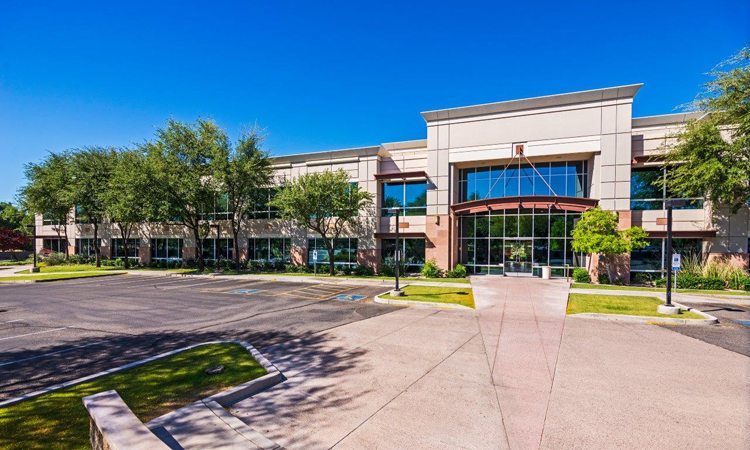The dark legacy of the global pandemic can be found among the wreckage wrought in the commercial real estate market, which is still struggling to recover from lockdowns, stay at home orders and Covid-related travel restrictions. Falling demand for office space, rising retail vacancies, falling rental prices per square foot, declining hotel revenue, are among the ominous legacy of the global pandemic, although some encouraging signs emerged toward the latter half of the second quarter. More retailers went bankrupt in 2020 than during the Great Recession, to cite one ominous example how commercial real estate can be especially vulnerable to “black swan” style events.
But consider the understated success of healthcare real estate. The healthcare sector proved its stability since the financial crisis and resiliency during the COVID-19 crisis. It’s also looking like a best bet for the second half of 2021 and beyond.
OrbVest, a global real estate company investing in income-producing medical commercial real estate in the United States, is moving aggressively to capitalize on attractive investment opportunities in healthcare commercial real estate.
OrbVest recently closed its purchase of Fleming Island, a 76,771-square-foot office property located in Jacksonville, Florida. Fleming Island is OrbVest’s fourth acquisition since the start of 2021, securing its third property in Princeton, New Jersey, a medical and office building comprising 40,028 square feet of rentable space; Talavi Spectrum, a 74,662-square-foot, multi-tenant office building in Phoenix, Arizona, OrbVest’s second property in greater Phoenix metro area; and a 11,852-square-foot Great Expressions Dental Centers office situated on 1.15 acres in Fayetteville, Georgia.
“We believe healthcare-related commercial real estate in the U.S. proved its resilience before and during the pandemic, and should continue its growth as an aging population and technological progress continue along its upward growth trajectory,” said Martin Freeman, OrbVest CEO.
According to Colliers transaction data, vacancy rates rose 20 basis points to 8.9% in 2020 for medical office space, but that should be viewed in comparison to a 13.6% vacancy rate for traditional office space.
Let’s consider the outlook for the remainder of 2021 for the commercial real estate market, with a particular focus on healthcare real estate.
How Will Beaten Down Sectors Do in 2021?
A lot will depend on vaccine distribution and the pivotal role it will play in reopening our economy. COVID-19 is still far from over. The vaccines appear to be effective and distribution is significantly ramping up, buoying optimism. The $1.9 trillion in stimulus money could also help speed up our economic recovery. But 2020’s most beaten-down sectors will still have questions.
The multifamily market in the Sunbelt and Mountain region, for one, could do especially well over the next few years. There was a significant amount of in-migration, household formation, and employment growth in the Sunbelt before the pandemic. Plus, during the pandemic, this region saw fewer job losses. The Mountain region should also see some momentum due to rapidly growing populations, a strong quality-of-life, and affordable living costs.
But this will be a fragmented recovery. Some regions like the Northeast and Rust Belt could have a difficult time recovering in the short-term and long-term.

Or how about the hospitality industry? When you hit bottom, there’s nowhere to go but up, right? This was a sector extensively beaten down during the pandemic. Hotels especially were hurt. However, this is a sector that’s expected to make up considerable ground in 2021. With so much pent-up demand to simply live our lives, travel, or go to a restaurant, this sector could really surge.
Now, will it reach pre-pandemic levels? That’s doubtful in 2021. There are risks involved too. The pandemic is not over, and there are virus variants. However, there are some reasons for optimism.
Occupancy, ADR, and RevPAR numbers in larger gateway metro areas, while still below pre-pandemic highs, are currently leading the country.
Plus, we’re surprisingly seeing a healthy amount of new construction in this low-interest environment.

The struggling office market could possibly recover too, but there are more questions here. Southern markets like Atlanta and Charlotte are either outperforming the U.S. average or are holding steady and seeing more traction thanks to in-migration. But with work-from-home working so well, who knows what the future could look like. CBRE claims that demand could be permanently cut by 15% because of the shifts to remote work. Their forecast for office vacancy rates is not pretty.

Lastly, what will happen to brick and mortar retail? The future is cloudy. Specific markets like the Sunbelt and Midwest that were more aggressive in reopening may do better. At the same time, larger cities with strict lockdowns may see permanent scarring. However, this is one sector that could significantly benefit from the stimulus packages passed in the last year. Nevertheless, the underlying theme here is the recovery could be unpredictable and fragmented.
Looking to the Future
The big trend here is how social distancing and the rise in eCommerce have been massive tailwinds for industrial real estate. This is especially evident when you consider the demand for properties focusing on logistics. Consider specifically the need for warehouses, data centers, and cold-storage facilities.
Industrial real estate has long been in favor due to its low overhead costs and relative stability. The strong 2020 and first half of 2021 should continue well into the future. Ecommerce has been the primary driver of this for years now. But thanks to the pandemic, the use of eCommerce could be a permanent consumer behavior shift. There will undoubtedly be needs for more warehouse and distribution facilities and inventory expansion-regardless of location.
However, there are some concerns with industrial real estate. According to commercial real estate firm Price Edwards and Company, the most significant weaknesses for industrial real estate are as follows:
Potential Holdover – Spaces have more specific build-outs and can be more challenging to release once a tenant moves out.
Less “Flipping” – Industrial real estate is for the long-term. If you’re looking for quick profits and a flip, this isn’t a sector for you.
Often Single Tenant – Industrial real estate is like being a clean-up baseball hitter. You’re looking to swing for the fences, but you may strikeout. Most industrial properties are often single-tenant, so your rental incomes may be all or nothing.
Less Glamorous – This is self-explanatory. There’s nothing glamorous about warehouses. It won’t get you much fanfare.
Less Availability – Although industrial properties have strong occupancy rates, they are fewer and far between and hard to find.
Why is Healthcare the Best Bet?
When considering investing in healthcare real estate, it is advisable to consider pre-pandemic data, performance during the pandemic, and post-pandemic growth opportunities.
Between the financial crisis of 2008 and the first quarter of 2020, the medical office sector’s occupancy rate stayed relatively stable. Compared to the average occupancy rate of roughly 82.1 percent to 85.8 percent for U.S. offices in that same period, medical properties saw occupancy rates of between 91.4 percent and 92.6 percent.

Healthcare properties maintain an average retention rate in the high 80 percent range, and steady rent growth. Medical office net rents increased from $17.63 per square foot in 2011 to $21.51 in 2020.

COVID-19
Nearly a decade ago, Doug Whitman, EVP of corporate finance for Healthcare Realty Trust (NYSE: HR), said, “Health care REITs are not completely recession-proof, but they are recession-resistant.”
James Milam, associate director and lead analyst for health care REITs for Sandler O’Neill and Partners, said that “Demand for health care facilities is based more on need and demographics than on business cycles.”
If you look at how remarkably stable this sector performed during COVID’s economic downturn, those quotes appear to be just as relevant in 2021.
Key Takeaways: Post-Pandemic and Beyond
Pre-pandemic and mid-pandemic stability have positioned healthcare properties to see significant demand and growth in 2021 and beyond. Nuveen projects that alternative real estate exposure, including healthcare, only makes up around 12% of most real estate portfolios. By 2030, this number could balloon to 50%, with healthcare making up 15% of this portfolio.

Trends are pointing towards better conditions for patients and providers. At the same time, intelligent investors see healthcare real estate as a strategic and safe investment. With interest rates expected to stay low for the foreseeable future, this is a generational opportunity in commercial real estate. There have been significant purchases from private equity and private buyers, as well as institutional investors, since the start of the year.
Because multi-tenant medical properties and single-tenant properties remained stable with high occupancy and cash flows, property values are either back to or better than pre-pandemic levels, with no slowdown in sight.
Segmenting away from traditional hospitals and diversifying into outpatient and specialized facilities is a growing trend that will create significant demand and opportunities for real estate. According to Globest, “In the long-term, medical office buildings, in general, will re-emerge as a sound investment because the healthcare industry will need new and different types of facilities.”
The segmentation away from hospitals has actually worked better for both providers and patients. It offered providers additional revenue streams when a significant amount was slashed due to the loss of elective procedures. At the same time, patients now have more convenient and affordable access to specialized healthcare.
MedTail could be one of the most exciting investment opportunities for 2021 and beyond. Consider these surveys. A JLL survey showed that 71% of consumers traveled 20 minutes or less to receive care. The National Association of Realtors Q3 survey results also showed that 52% of respondents said vacant malls are being transformed into new uses such as healthcare centers or hospitals.
The medical real estate sector has shown overall steady growth and there has been a marked turnaround within the medical office building segment. The industry has adapted well to the pandemic and is now stabilizing and growing further.
“When you consider the aging population, shifting population demographics, advances in science and technology and changing consumer patterns, healthcare real estate is a strong best bet for commercial real estate investing post-COVID,” said Freeman.




